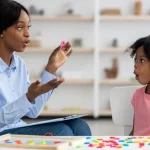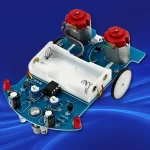Parents today are asking more from childcare in Singapore than they did a decade ago. While academic readiness remains important, many families now want their children to grow in confidence, creativity, and independence from their earliest years. This shift has opened the door for the Reggio Emilia philosophy, a post-war Italian approach that has travelled far from its roots to influence classrooms across Asia. Due to its focus on child-led learning and community collaboration, Reggio Emilia is reshaping what quality early childhood education looks like.
A Fresh Perspective on Child-Led Learning
Learning in many childcare centres still follows a structured path centred on worksheets, fixed schedules, and teacher-directed lessons. Reggio Emilia challenges this by turning the spotlight onto the child. Instead of being passive recipients of knowledge, children are treated as curious explorers who bring their own questions, ideas, and insights to the classroom. Teachers act more like guides than lecturers, helping children build projects out of their interests—whether that is drawing, storytelling, or experimenting with natural materials. This model resonates with parents who want their children to develop not only literacy and numeracy, but also resilience, critical thinking, and problem-solving skills that extend beyond the classroom.
The Environment as an Active Teacher
Walk into a Reggio Emilia-inspired childcare centre and the difference is immediately visible. Instead of rigid rows of desks, there are light-filled rooms, open spaces, and corners designed for exploration. Walls may display children’s artwork and thought processes, while shelves are stocked with natural materials, recycled items, and tools for experimentation. The belief is simple: the physical environment plays as big a role as teachers or parents in shaping a child’s development. Reggio Emilia in Singapore gives children the freedom to test, discover, and create by crafting inviting, interactive spaces, fostering a natural love for learning.
Building Stronger Partnerships with Parents
Another defining feature of this approach is the way it draws parents into the learning journey. Families in Reggio-inspired centres are not just occasional visitors but active participants. Teachers regularly share documentation of a child’s progress—photos, drawings, or recorded conversations—and invite parents to reflect on them. Parents, in some cases, are involved in school projects or decision-making processes. This level of collaboration is still uncommon in mainstream childcare, but it is becoming a valued aspect of Reggio Emilia centres. Children experience greater consistency and support in their development by bridging home and school.
Documentation as a Living Record
Instead of relying solely on checklists or report cards, Reggio Emilia educators document the child’s journey in a richer, more visual way. Notes, sketches, and project displays capture how children think, ask questions, and work through challenges. This instance provides parents with an intimate look at the child’s daily growth, beyond academic scores. Meanwhile, for teachers, it becomes a valuable tool to reflect on their methods and adjust their guidance. This kind of documentation offers a refreshing way to see learning as an evolving process rather than a fixed outcome.
Navigating Challenges in Local Context
Despite its growing popularity, integrating Reggio Emilia into childcare is not straightforward. The approach requires significant investment—higher staff-to-child ratios, teacher training, and thoughtfully designed environments. These factors often make Reggio-inspired centres more expensive, limiting access to families who can afford the fees. Yet demand continues to rise, reflecting a deeper shift in parental priorities. Since the city-state’s education system is increasingly emphasising creativity, innovation, and future-readiness, the Reggio Emilia philosophy sits comfortably within that vision, even if questions of cost and scalability remain unresolved.
Conclusion
The growing presence of Reggio Emilia in Singapore marks a turning point in how early education is perceived. This philosophy extends the role of childcare beyond preparing children for primary school by valuing curiosity, collaboration, and creativity. It positions learning as a lifelong journey that begins in preschool, guided not by rigid structures but by imagination and community support. While challenges around accessibility remain, the Reggio Emilia approach is clearly influencing the way families and educators see the future of childcare—not just as a service, but as the foundation of a child’s growth and identity.
Visit Apple Tree Playhouse to give your child an early start that prepares them not just for school, but for life.












